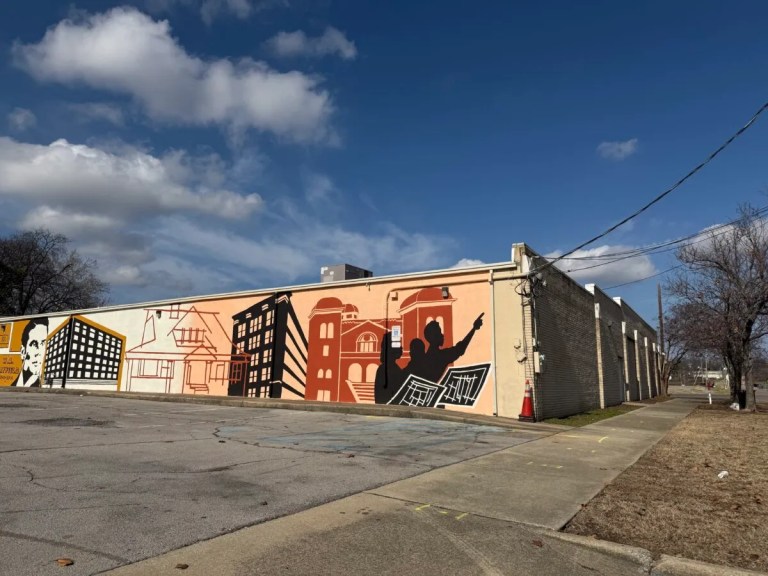Spiders, ticks and poison ivy. Local scientists share examples of Alabama’s changing climate
Reading time: 6 minutes
Sponsored

When I began writing this series about Alabama’s changing climate and the impacts it will have on us and our natural world, I am reminded of the line in the Wizard of Oz, when Dorothy, the Tin Man, and The Scarecrow are frightened in the forest. They started chanting, “lions and tigers and bears,” oh my!
Well, according to local scientists, if Alabama’s climate continues to change unimpeded over the next hundred years, our refrain here in Birmingham may be spiders, and ticks and poison ivy, oh my
Stay with me as I explain.
Ground-breaking report

Back in 2007, Samford University’s Larry Davenport published a ground-breaking report predicting what Alabama landscapes and habitats would look like if our climate continues to evolve in the current direction.
Titled, “Climate Change and its potential effect on Alabama’s plants,” this in-depth study, which was commissioned by the Vulcan Materials Center for Environmental Stewardship and Education, conservatively predicted massive changes to plant life in Alabama by the end of the century.
Some of the predictions included the following:
- Temperate-based crops, such as wheat and peaches, will likely suffer significant losses.
- Some of Alabama’s current eco-regions will shift northward or northeastward.
- Alabama’s forests will suffer increased pest problems and increased populations of vines.
- Alabama’s future pest and invasive plant species will be more tropical (think more privet, cogongrass and yes—poison ivy and kudzu).
- Current crops will suffer without irrigation.

Davenport acknowledged, “I was very conservative in my predictions. Some were very scary. Like sugar maples would disappear. Other plants would take hold. For example, invasive species like poison ivy would become virulent.”
Spider in a coal mine? The giant spider migrates
Scientists are documenting—“ground-truthing”—the changes to Alabama’s landscapes and ecology as a result of a changing climate. Animals, insects, and plants are forced to make adjustments. Some succeed. Many more fail. They are our modern-day canaries in the coal mine.
One example Davenport provided us is the case of the Golden Silk Spider.
Several years ago, Dr. Mike Howell, a Samford colleague of Davenport’s and author of the definitive book on Spiders in the Eastern United States, noticed that he saw more and more Golden Silk Spiders. Sixty years ago, when Howell was a kid growing up in South Alabama’s Geneva County, he rarely saw the spider.
How did he know there were not many Golden Silk Spiders when he was young? Well, this particular spider spins webs that are four to six feet wide and up to six feet tall. They are unforgettable.
Historically, over the past 50 years, the Golden Silk Spider had not been seen in Alabama beyond the fall line near Montgomery.
This got Davenport thinking. “This could be my critter. We are going to map out the northward shift of this spider, proving local changing climate. It is an iconic creature that we cannot miss.”
How are spiders an indicator species?

In a nutshell, spiders are invertebrates. They are also seasonal. They emerge from their egg sacks in the spring, live and grow all summer long, produce their egg sacks, and die. If the climate is warming, they have more opportunities to expand their territories north. The new area is impeded by cold weather.
Joined by another Samford biologist Kristin Bakkegard, the scientists discovered that over the past half-century, the Golden Silk Spiders have been moving northward, nearly 100 miles past their previous range along the fall line to Birmingham. The giant web weaving spider found on Ruffner Mountain and Red Mountain Park is something that was unheard of 50 years ago. All said, this particular spider provides clear evidence the climate is changing.
Why does this one spider matter?
“It shows you this constant gradual change, and that’s what climate change is,” said Davenport. In this case, it is the constant gradual shift north—out of the coastal plains to the mountains of central Alabama. This has happened in just 50 years.”
Ground-truthing all over the world

And Alabama scientists are not just discovering a changing climate in our state. UAB’s Jim McClintock is one of the world’s most renowned polar scientists researching in Antarctica. He has seen creatures on the move from climate change, much like Alabama’s Golden Silk Spider.
This past decade he has documented king crabs moving near the habitats where Antarctic clams, snails, and brittle stars live. Because Antarctic sea creatures have adapted to their environment over thousands of years, they have soft shells and have never had to fight shell-crushing predators, like the king crabs.
According to McClintock, the loss of these unique creatures could jeopardize organisms which contain disease-fighting compounds. For example, certain primitive marine creatures called sea squirts produce an agent that fights skin cancer.

13 years later
Today, thirteen years since the publication of his white paper on Alabama’s changing climate, we asked Davenport if his predictions all panned out?
He gave a stark answer. “Everything I read now shows these predictions, tentative as they were, they’ve come true.”
He noted, “…more storms, more forest fires, more intense hurricanes—the animals seem to have shifted more than the plants. Things like pests and insects seemed to have increased. Instead of having two offsprings during the summer and then dying off, they got time for three. More pests, ticks and bark beetles.”
It’s the insects and plants that are showing us the changes in our climate.
What’s Next

In our next installment, we’re going to explore the topic that is on everyone’s mind in Birmingham – rain, rain and more rain – over 20 inches in January and February! Bring your rainboots and umbrella.




